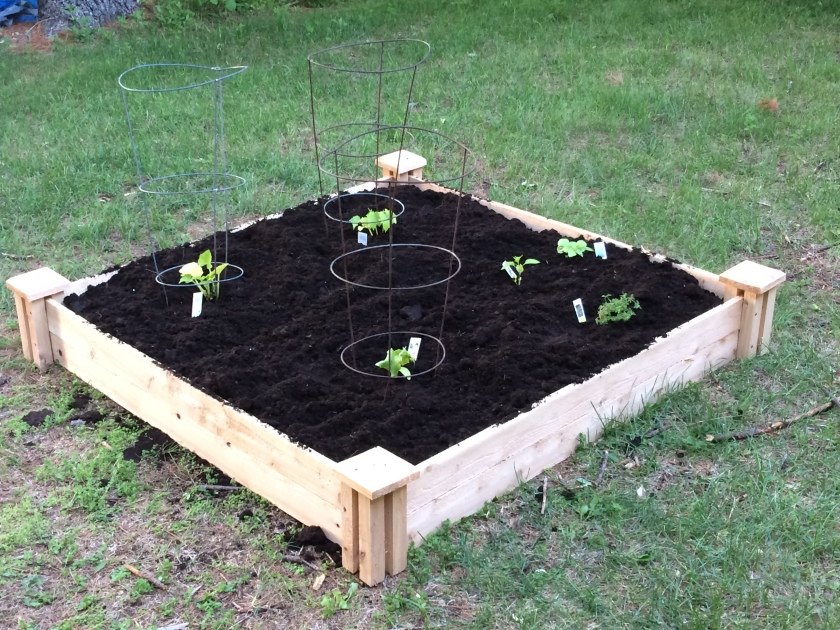
My son and daughter, ages seven and five respectively, wanted to help me put together this garden last night. My son’s job was to assist me in stacking and sliding the cedar boards together. My daughter distributed the screws to me, one at a time, when I was ready to drill the boards together.
This set up worked fine, until my son decided to chop off the tops of some of the bee balm growing by the house with his toy sword. This led to my daughter, in her attempt to redirect her brother, dropping one of the wood screws. My wife saved the day, finding it in the grass later that evening.
It would have been easier if I had just built this raised bed by myself. I really didn’t need the help. But then again, my son would not have been exposed to 90˚ angles or dovetail joints. My daughter would have been deprived of appreciating the initial fruits of our labor, even if they would result in “yucky” zucchini. In the end, we did achieve our goals. It took a little bit longer than anticipated to get there, but we arrived together.


Awesome post, Matt. Have a great summer!
LikeLike
Great post!
I think this cuts to the heart of a big problem in education today– the amount of material teachers need to “cover” limits how messy we can afford to be in the classroom setting. To really learn, students need time to work with their knowledge, to apply, to absorb all the ambient understandings like you mention in this post. Your kids gained a lot more authentic learning from this messy process than they would if you told them about angles and made them take a multiple choice test about them.
Thanks for sharing this.
LikeLike
Thank you George for the thoughtful comment. Your question is important: How do we find the time to allow learners to explore the concepts and skills we present for them? Our school is attempting to integrate literacy and content, in hopes to not only find time, but also to provide those essential connections across disciplines for students.
Always a process…
LikeLike